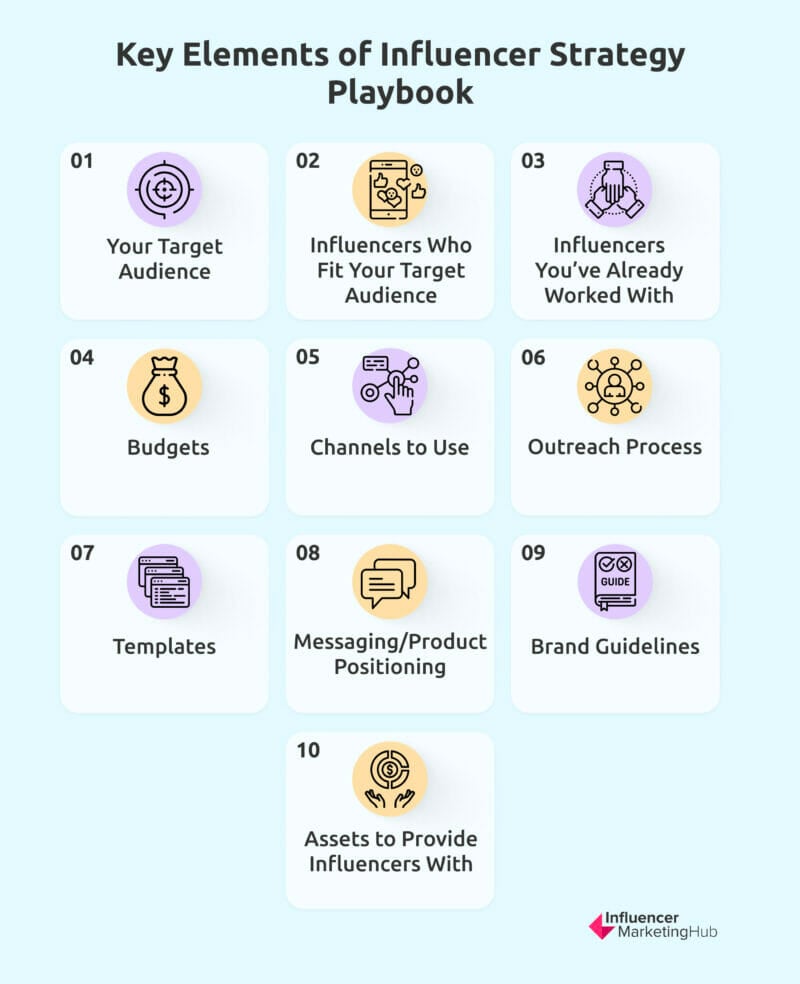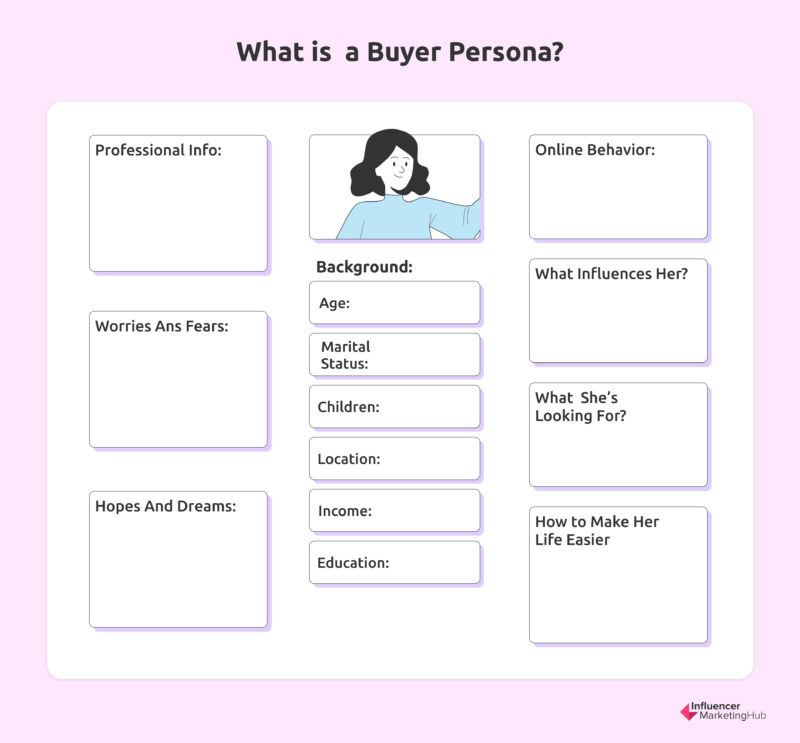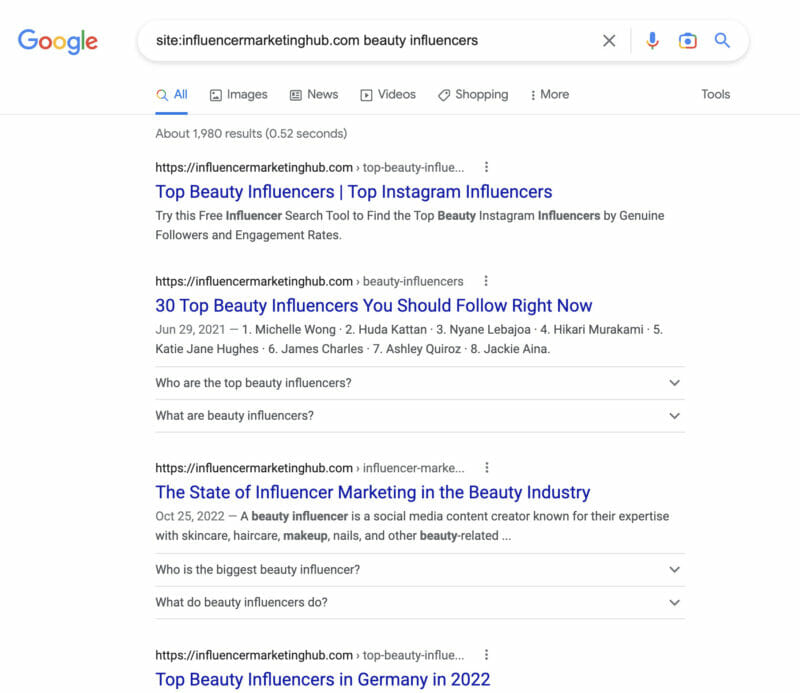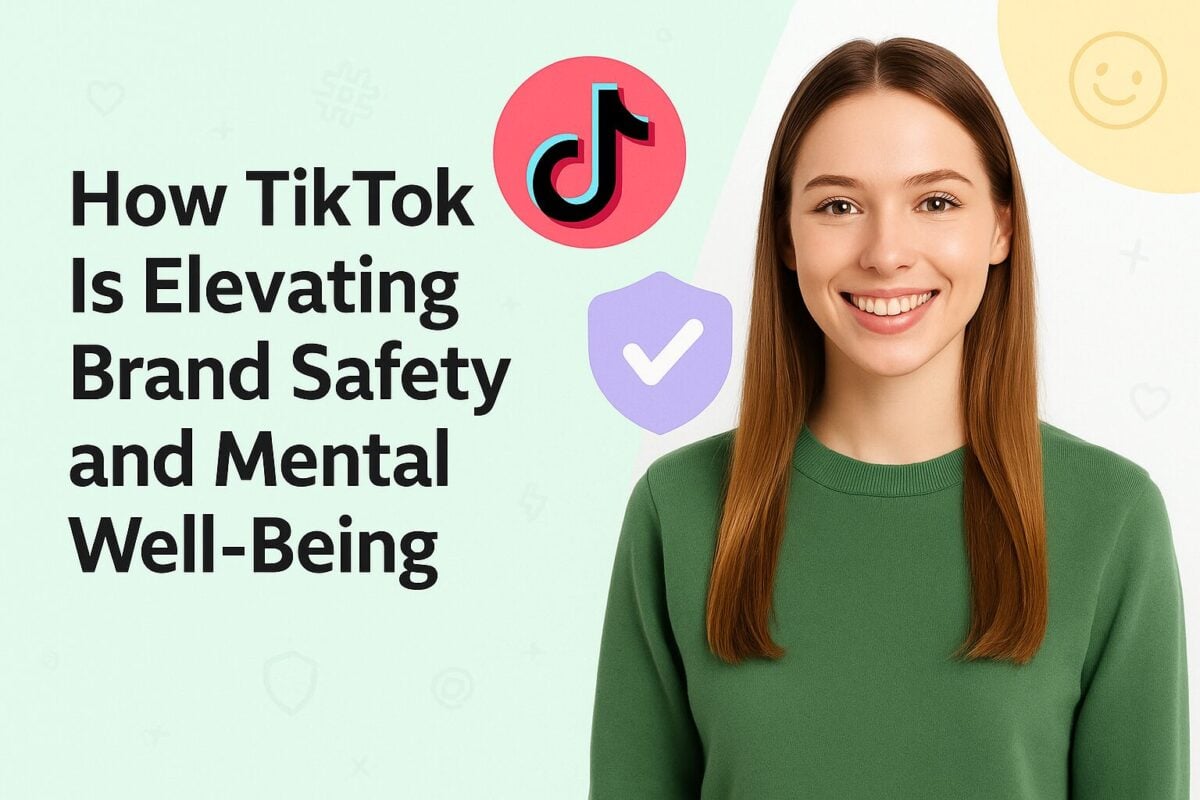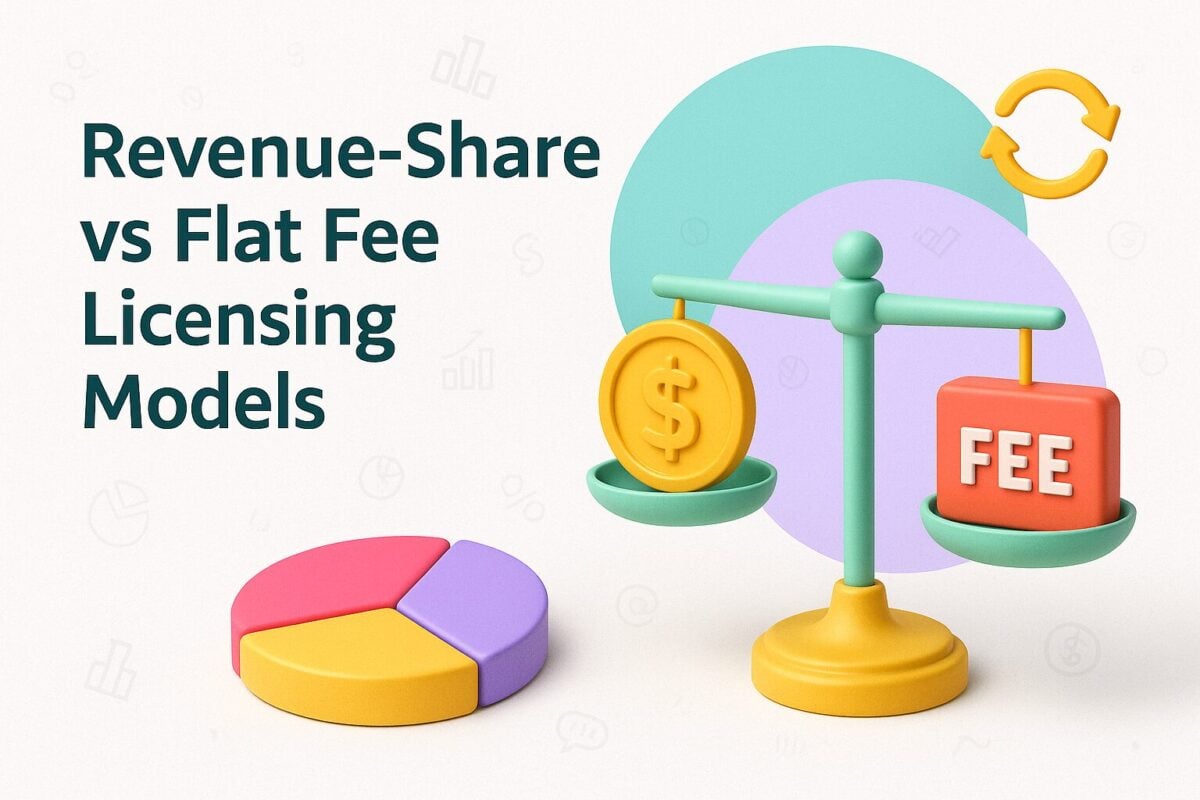The influencer marketing industry is now worth $21.1 billion, proving how important it is to have some sort of documented influencer marketing strategy within your organization.
Even if your company hasn’t yet delved into the world of influencer marketing, it’s a good idea to start with a plan—or better yet, your own influencer recruitment strategy playbook.
Throughout this article, we’ll walk you through what an influencer recruitment strategy playbook is, why you need one, what to include in yours, and more.
Let’s get started.
What is an Influencer Recruitment Strategy Playbook?
An influencer recruitment strategy playbook is a documented strategy for finding, negotiating, and working with influencers. It helps present your brand in a more professional and organized light and makes the influencer marketing process much simpler.
You’ll include information like your target audience, communication templates, brand assets, and more. This helps streamline the overall process, leaving no stone unturned.
Why Should You Have an Influencer Recruitment Strategy Playbook?
Having documented processes within your business is always a good idea. This way, if you expand your team or team members leave and you have to find replacements, there are parameters in place to ensure processes remain streamlined.
Other major benefits include:
- Influencers will enjoy working with your brand
- It makes your job easier
- It helps make processes more efficient
- It ensures your recruitment strategy is consistent
All in all, the more documented processes you keep, the more organized your team and business is as a whole. So let’s walk through how to get started creating your own playbook.
What Goes Into an Influencer Recruitment Strategy Playbook?
Ready to create your influencer recruitment strategy playbook? There are 10 essential elements that can help make your influencer marketing process much easier, streamlined, and efficient.
1. Your Target Audience
First, start out by inputting information about your brand’s target audience. The best way to go about this would be creating a buyer persona.
A buyer persona is a detailed profile of the audience(s) most likely to be interested in your product or service. You can easily create one using a template like the one below:
If you have different audiences, you may even have more than one persona. For example, a company selling exercise equipment may target gyms buying equipment in bulk as well as fitness enthusiasts looking to build a home gym.
Your buyer persona will include information like:
- Basic demographics
- Online behavior
- Pain points
- What influences them into making a purchase
- How they search for products
Fill out as much information about your target audience as possible so that your team knows exactly which types of people will be most likely to buy your product or sign up for your service.
2. Influencers Who Fit Your Target Audience
The next section will include a list of influencers that fit your target audience. Or, in other words, influencers who appear to be targeting the same audience that you are.
Let’s go back to our exercise equipment example. They would likely build a list of health and fitness influencers. Putting together a list of food influencers—unless they were specifically healthy food influencers—likely wouldn’t make sense for their brand.
Having this ready-to-go list of influencers that match your target audience can be used as a jumping-off point when your team starts reaching out to and nurturing relationships with influencers you want to work with.
We’ve got plenty of tools here at Influencer Marketing Hub to help you as well—plus many different influencer directories.
Try running a simple Google search using the advanced command “site:influencermarketinghub.com” to find lists of influencers specific to your audience. For example, you can easily find a number of roundups of top beauty influencers you might want to add into your playbook.
You might also want to section out your influencer directory based on platforms as well. While some influencers might be popular on multiple platforms, others have a main platform they focus on. So you’ll want to know which influencers to use for a campaign on TikTok versus a campaign on Instagram.
3. Influencers You’ve Already Worked With
Next, you’ll want to create a list of influencers you’ve already worked with. This would be a living document that you update each time you run a new influencer campaign or work with a new batch of influencers.
Make sure you also include other information alongside this list. Some pertinent data to add in would be ratings or notes on if you’d want to work with each influencer again. Having this information on-hand can be extremely informative for building up a great batch of go-to influencers each time you want to run a new influencer marketing campaign.
4. Budgets
This section may also be regularly updated depending on how often your influencer budgets change. In fact, you may even want to update this section each time you run a new campaign so that you know exactly how much you have to spend.
However, having information on-hand for how much your company is willing and able to spend for each campaign can help you determine how many influencers and which influencers to work with.
Consider breaking your budgets section down by:
- Overall campaign budget info
- Per-influencer budget info
- Per-post budget info
And anything else that you think would be useful to someone referencing your influencer playbook.
Depending on what software you use to create this document, you may even want to add in tables that can be used to calculate how much budget you have left after each contract is signed.
5. Channels to Use
Which channels or platforms do you want your influencer campaigns to utilize? You’ll need to match them to your target audience. For example, why would you work with an influencer on a TikTok campaign if your target audience doesn’t actually use TikTok?
List out all of the channels that your target audience is on—this should match up with the channels that your brand has a presence on as well. These can be used as your go-to channels for campaigns as well as researching new influencers to add to the second section of your handbook.
6. Outreach Process
How will you reach out to the influencers you want to work with? Detail each step of an outreach process—especially a tried-and-true outreach process your team has used that works—in your document.
This is useful because it helps you start off a new campaign seamlessly, and it also helps new team members immediately get success reaching out to influencers, even if they’ve never done it before.
This might include information like:
- Which mode of communication to use for outreach
- How to find contact information
- How many times to follow up
- What to say in each message
7. Templates
The next section should include specific templates for outreach, contracts, SLAs, proposals, and anything else you might need during the process. This makes working with influencers much more efficient because you don’t have to draft up a new document each time—you already have templates to draw from and customize.
You can store multiple formats of templates here:
- Text you can copy and paste into new outreach emails
- Links or file attachments to documents like proposals and contracts
- Visual assets you might need to update or send out to influencers
Each time you find a new type of document or piece of content you need for an influencer campaign, save it to your templates section just in case you need it again in the future. This way, you don’t have to get legal, design, etc., involved; instead, you have it ready-to-use again and again.
8. Messaging/Product Positioning
How do you want your product to be promoted? Include your brand’s overall messaging perspective, brand voice, and product positioning in your playbook so you can easily reference it and share it with the influencers who will be working on your campaign.
This ensures they talk about your product in an approved manner that matches your existing marketing messaging, helping to build a cohesive strategy. It also provides them with language to avoid when talking about your product.
This section (as well as the last two) should be shareable so that you can provide your influencers with as much information as possible. This is the best way to help them succeed. Their job is to increase awareness about your brand; your job is to give them enough tools so they know how to properly talk about your product or service.
9. Brand Guidelines
The next section of your influencer playbook will include your brand guidelines. What are your fonts, colors, patterns, etc., associated with your visual brand? What are the do’s and don’ts for using your logo in visual content?
Your logo and branding designer has likely created a full brand guide for your team to reference. That guide in itself can simply be added into this document to make it even easier for your team.
10. Assets to Provide Influencers With
Last, but certainly not least—especially if you discover other sections that will be useful in your influencer recruitment strategy playbook—you’ll want to compile a file full of assets to provide your influencers with.
A hi-res version of your logo should be one of the files in here. Others might include graphics, photos, bits of pre-written copy, and anything else you want them to reference as they create their own promotional content.
Including existing assets helps influencers to create their own user-generated content in a way that matches the content you’re already publishing. It helps create a seamless visual campaign across the board.
Build Your Influencer Recruitment Strategy Playbook Today
Streamline your company’s processes with standardized documents—starting with your influencer recruitment strategy playbook. Consider this your influencer marketing bible that can help walk you through the process of finding influencers all the way down to signing the contract and providing them with key information about your business.
Then, start discovering even more ways to build up your list of influencers and finding those that match your target audience. Check out our do’s and don’ts of finding the right influencers to help you out.
Frequently Asked Questions
What should you look for when hiring influencers?
When hiring influencers, you first need to make sure that their audience will actually be interested in your product or service. You’ll also want to check out their reach and engagement rates to make sure that people are actually seeing and interacting with their content, regardless of their follower count. You also want to make sure you’re hiring influencers with experience in the type of campaign you want to run or content you want them to create.
How do brands recruit influencers?
Start by doing research and compiling a list of influencers with similar audiences to yours. Then reach out via social media or, better yet, email to start building a rapport and seeing if they’d be interested in and available to work with your brand. It’s all about the research and the outreach, so be proactive about discovering the best influencers for your brand.
How do you create an influencer marketing strategy?
To create a solid influencer marketing strategy, you first need to pinpoint your goals and objectives. Why do you want to work with influencers? What are you promoting and what are your KPIs?
The next step is to map out your budget, the platforms you want to use for promotion, and the types of content you want created to promote your brand. Then, you need to start searching for potential influencers. Put together a pool of influencers you can start reaching out to and building out your campaign.
What is the best way to approach influencers?
The two most common ways to reach out to influencers are via direct message (DM) or email. DM creates a more casual conversation, especially if you want to simply nurture your relationship before approaching them about a campaign. Email is more official if you’re ready to work with the influencer and learn their rates.
What should be in an influencer contract?
Your influencer contract should include information like:
- Standard agreement terms
- Timeline of the campaign
- Deliverables
- Cancellation clauses
- An NDA (especially if you’re handing over specific brand assets)
- Compensation details
- Payment terms
